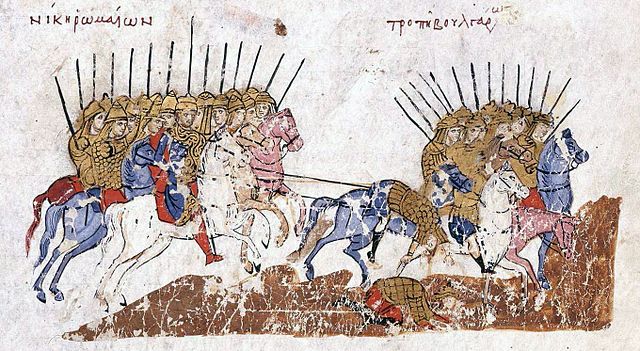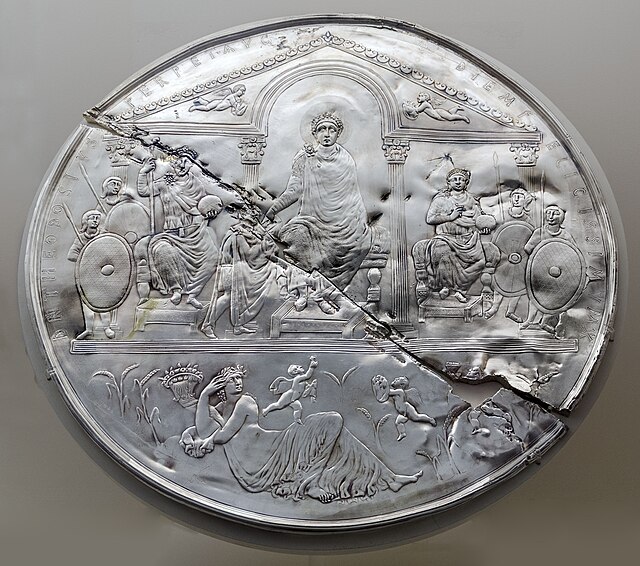Christianity in the 11th century
Christianity in the 11th century is marked primarily by the Great Schism of the Church, which formally divided the State church of the Roman Empire into Eastern (Greek) and Western (Latin) branches.
Medallion of Christ from Constantinople, c. 1100.
Henry IV at the gate of Canossa, by August von Heyden
Victorious Byzantine cataphracts pursuing the fleeing Bulgarian heavy cavalry, from the Madrid Skylitzes
The Second Ecumenical Council whose additions to the original Nicene Creed lay at the heart of one of the theological disputes associated with the East-West Schism. (Illustration, 879-882 AD, from manuscript, Homilies of Gregory Nazianzus, Bibliothèque nationale de France)
Christianity as the Roman state religion
In the year before the Council of Constantinople in 381, the Trinitarian version of Christianity became the official religion of the Roman Empire when Emperor Theodosius I issued the Edict of Thessalonica in 380, which recognized the catholic orthodoxy of Nicene Christians as the Roman Empire's state religion. Historians refer to the Nicene church associated with emperors in a variety of ways: as the catholic church, the orthodox church, the imperial church, the imperial Roman church, or the Byzantine church, although some of those terms are also used for wider communions extending outside the Roman Empire. The Eastern Orthodox Church, Oriental Orthodoxy, and the Catholic Church all claim to stand in continuity from the Nicene church to which Theodosius granted recognition.
Monogramme of Christ (the Chi Rho) on a plaque of a sarcophagus, 4th-century AD, marble, Musei Vaticani, on display in a temporary exhibition at the Colosseum in Rome, Italy
Icon depicting Constantine and the bishops of the Council of Nicaea (325). The centrally placed and haloed Emperor holds the Creed of the First Council of Constantinople (381).
Missorium of Emperor Theodosius I, who declared Nicene Christianity to be the State religion of the Roman Empire. This piece was found in Almendralejo.
The Hagia Sophia basilica in Constantinople, for centuries the largest church building in the world.







